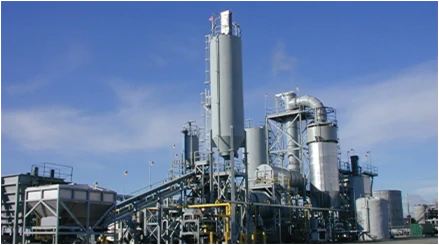
12 月 . 03, 2024 18:23 Back to list
hazards of glacial acetic acid
Understanding the Hazards of Glacial Acetic Acid
Glacial acetic acid, or ethanoic acid, is a colorless liquid with a pungent smell. As a key component in many industrial applications, it shows its importance in the manufacturing of plastics, food products, and pharmaceuticals. While glacial acetic acid is widely used, it is also essential to recognize the potential hazards associated with this chemical, which can pose significant risks to health and safety when not handled properly.
Chemical Properties and Uses
Glacial acetic acid is characterized by its high purity and concentrated nature, containing at least 99% acetic acid. In the laboratory and industrial settings, it serves various roles, including as a solvent, a reagent in chemical synthesis, and in the production of various acetate compounds. It can be found in vinegar, used as a food preservative and flavoring agent, but in its glacial form, it is much more potent and hazardous.
Health Hazards
One of the primary hazards of glacial acetic acid is its corrosive nature. Contact with skin or eyes can lead to severe burns and irritation. Even short-duration exposure to vapors can cause respiratory distress, including coughing and throat irritation. In cases of prolonged exposure, this chemical can lead to serious lung damage.
Ingestion of glacial acetic acid poses significant health risks as well. It can cause severe gastrointestinal burns, leading to symptoms such as nausea, vomiting, and abdominal pain. In extreme cases, it may result in systemic toxicity and potentially fatal outcomes, underscoring the need for immediate medical attention after exposure.
Environmental Hazards
Beyond human health, glacial acetic acid can pose environmental risks. When released into the environment, it can lead to the acidification of soil and water bodies, potentially harming aquatic life and disrupting local ecosystems. Careful disposal and management practices are crucial to prevent spillages and minimize environmental impact.
hazards of glacial acetic acid

Safe Handling and Precautions
Given the potential hazards associated with glacial acetic acid, appropriate safety measures must be taken. Personal protective equipment (PPE) is essential; this includes wearing chemical-resistant gloves, goggles, and lab coats. Work areas should be well-ventilated to minimize inhalation risks and the concentration of vapors in the environment.
When working with glacial acetic acid, it is vital to adhere to proper storage protocols. The chemical should be stored in tightly sealed containers made from appropriate materials, such as glass or certain types of plastic, away from incompatible substances like strong oxidizers. Labels should clearly indicate the contents and associated hazards, ensuring that anyone in the vicinity is aware of the risks.
Emergency Response
In case of an accidental exposure or spill, swift actions are necessary. For skin contact, contaminated clothing should be removed immediately, and the affected area should be rinsed thoroughly with water for at least 15 minutes. If it comes into contact with the eyes, they should be flushed with water, and medical attention should be sought promptly.
For inhalation exposure, moving the affected person to fresh air is critical. If symptoms persist, professional medical help should be obtained. In the event of a spill, proper containment and cleanup procedures must be followed, ideally by trained personnel equipped with the necessary tools and protective gear.
Conclusion
Glacial acetic acid is a valuable chemical in various industries, but its hazards cannot be underestimated. Understanding its risks and implementing rigorous safety protocols will help mitigate potential dangers. Whether in a laboratory, industrial setting, or during transportation, awareness and caution will ensure safe handling and minimize the risk to health and the environment. As with any hazardous material, education and preparedness are our best defenses.
